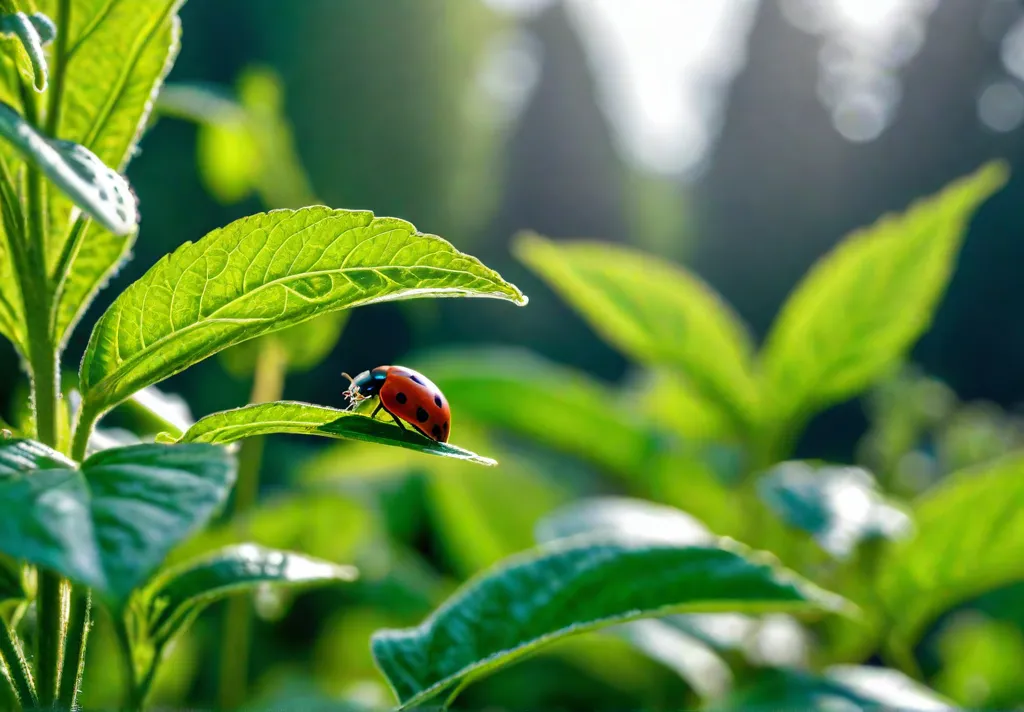Tired of waging a battle royale against the insect invaders in your veggie patch? Put down those harsh chemical weapons, friends. It’s time to take a cue from Mother Nature herself and discover the art of organic pest control. From luring in the garden’s tiny superheroes to unleashing the power of plant partnerships, I’m about to share my top natural tactics for keeping those pesky critters at bay.
So why should you make the switch to eco-friendly pest management? For starters, it’s better for the environment, your health, and all the creatures (like our precious pollinators!) that keep the natural world in balance. But don’t just take my word for it – stick around and I’ll prove that going organic doesn’t mean sacrificing a bountiful harvest. Let’s get growing!
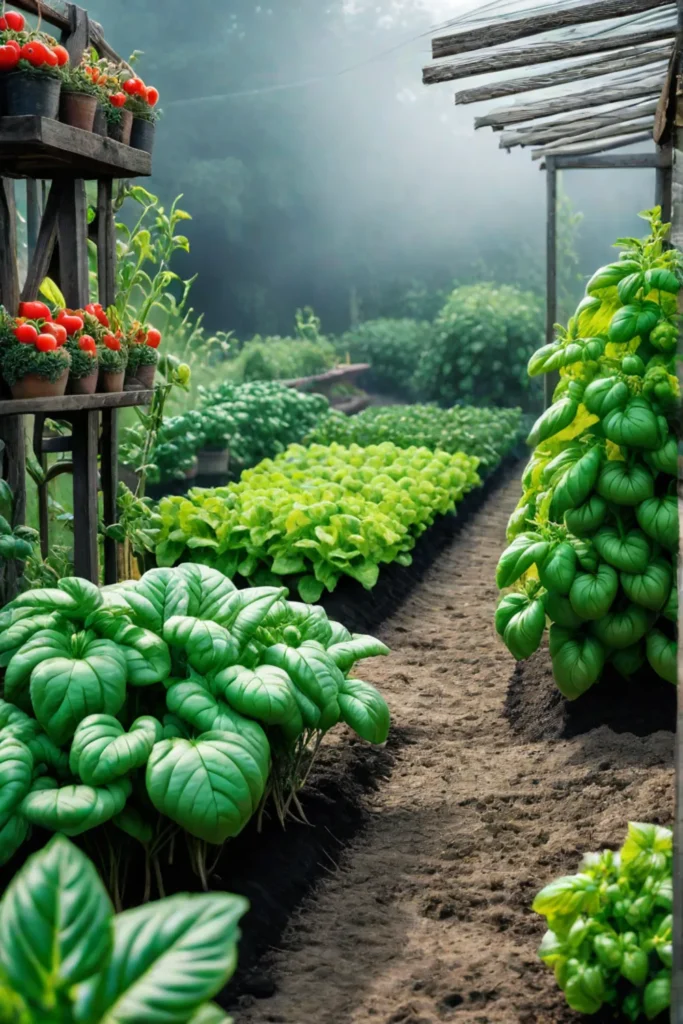
Invite Beneficial Insects: Your Garden’s Tiny Guardians
Did you know that a single ladybug can devour up to 5,000 aphids in its lifetime? These colorful little beetles are just one example of the amazing “pest patrols” nature provides to keep our gardens in balance. By welcoming beneficial insects into your veggie patch, you’ll have a squad of tiny guardians working 24/7 to control pest populations organically.
Identifying the Good Guys
Before you can attract beneficial insects, you need to know who you’re looking for. Some of the most common garden superheroes include ladybugs, lacewings, parasitic wasps, and predatory mites. Lacewings are especially voracious predators, munching on aphids, mites, and whiteflies in both their larval and adult forms.
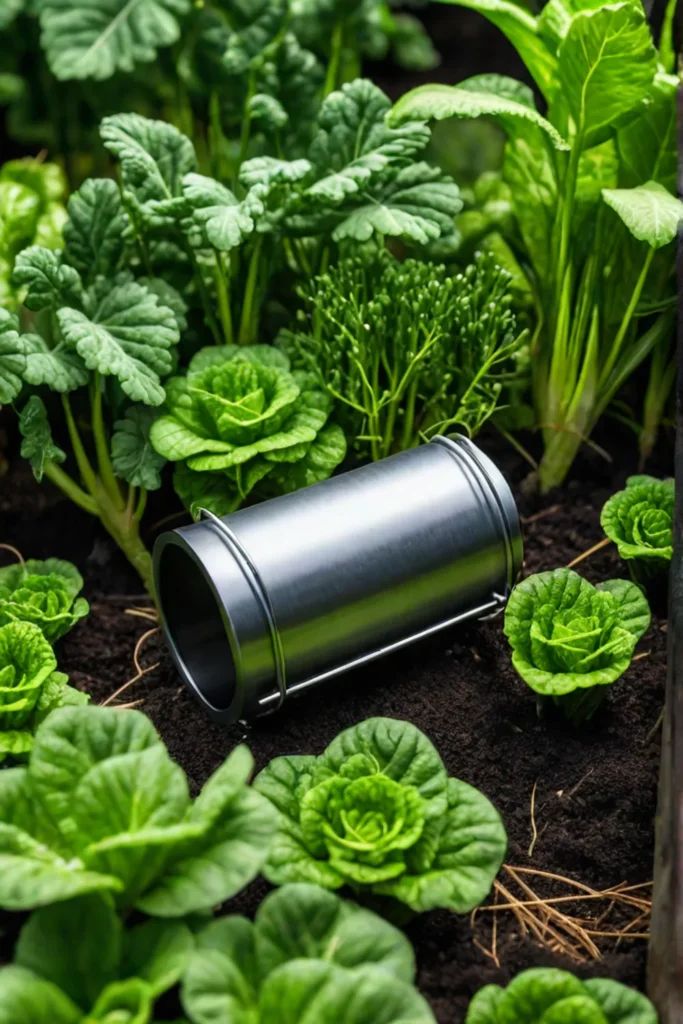
Creating an Inviting Habitat
Now that you know who you want to visit, it’s time to roll out the welcome mat. Beneficial insects are drawn to gardens with a diverse array of flowering plants that provide them with food sources like pollen and nectar. Try incorporating flowering herbs, wildflowers, and plants with umbels like dill, fennel, and yarrow.
Don’t forget to leave some water sources too! Shallow dishes or a birdbath with some rocks for landing pads will keep your pest patrols hydrated and happy. And most importantly, avoid using broad-spectrum pesticides that harm these helpful creatures along with the “bad” bugs.
Let Nature’s Pest Control Move In
At the end of the day, creating a welcoming environment for beneficial insects is one of the most proactive and natural ways to control pests in your garden. A little diversity goes a long way in attracting a wider range of these tiny guardians. So get planting and watch your pest patrol move in!
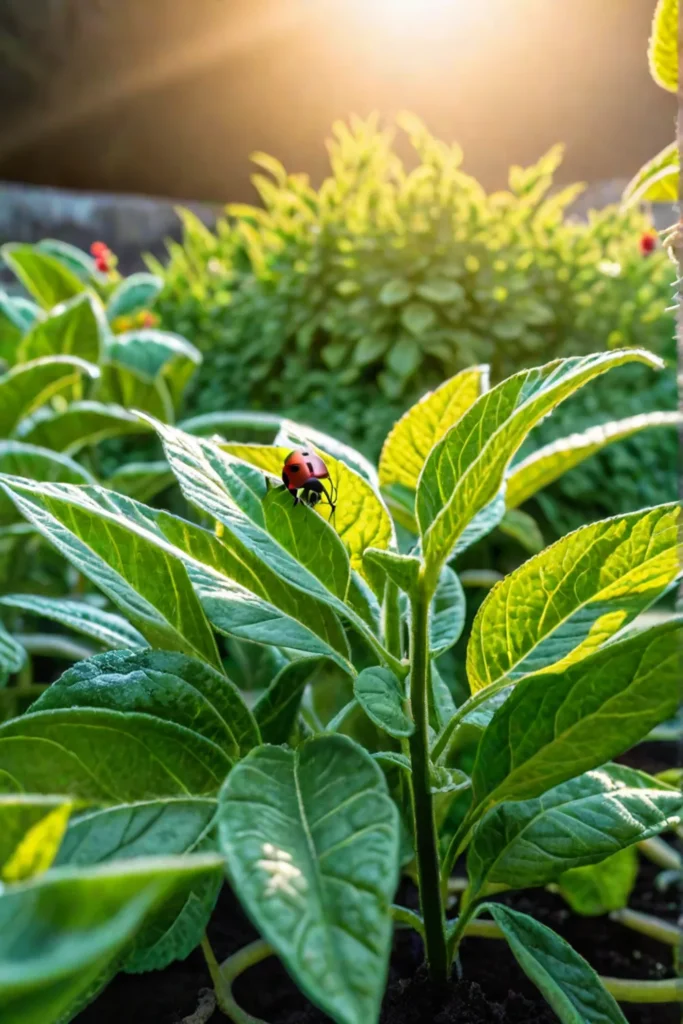
Attracting beneficial insects is just the first step in building a healthy, balanced garden ecosystem. Next up, we’ll explore the art of companion planting to harness the power of plant partnerships.
Harness the Power of Companion Planting
Did you know that the secret to an insect-free veggie garden could be as simple as planting a few extra crops? Companion planting is an all-natural way to keep pests in check by strategically combining certain plants that either repel insects or attract the “good” kind of bugs that prey on the pesky ones. Talk about an organic win-win!

Classic Companion Planting Pairings
Some dynamic duos that have been BFF goals for gardeners forever? Plant basil alongside your tomatoes to shoo away tomato hornworms and whiteflies. The pungent scent of marigolds makes nematodes and other soil critters say “nope” and steer clear. Chives are like a bouncer for your carrot patch, keeping carrot root flies away from the party.
Understanding the Science Behind It
So how exactly does this plant-powered pest control work? Turns out, certain species release natural compounds that repel insects or mask the scent that attracts them in the first place. Other plants like nasturtiums act as a trap crop, luring sap-sucking aphids with their irresistible aroma and sacrificing themselves so your prized produce stays unbothered.
Put It Into Practice
Ready to get your companion planting game on? Do some research on the best plant pals for the specific veggies you’re growing. As a general rule, try interplanting strong-scented herbs like thyme, rosemary, and sage throughout your beds. Their aromatic leaves double as flavorful pest deterrents!
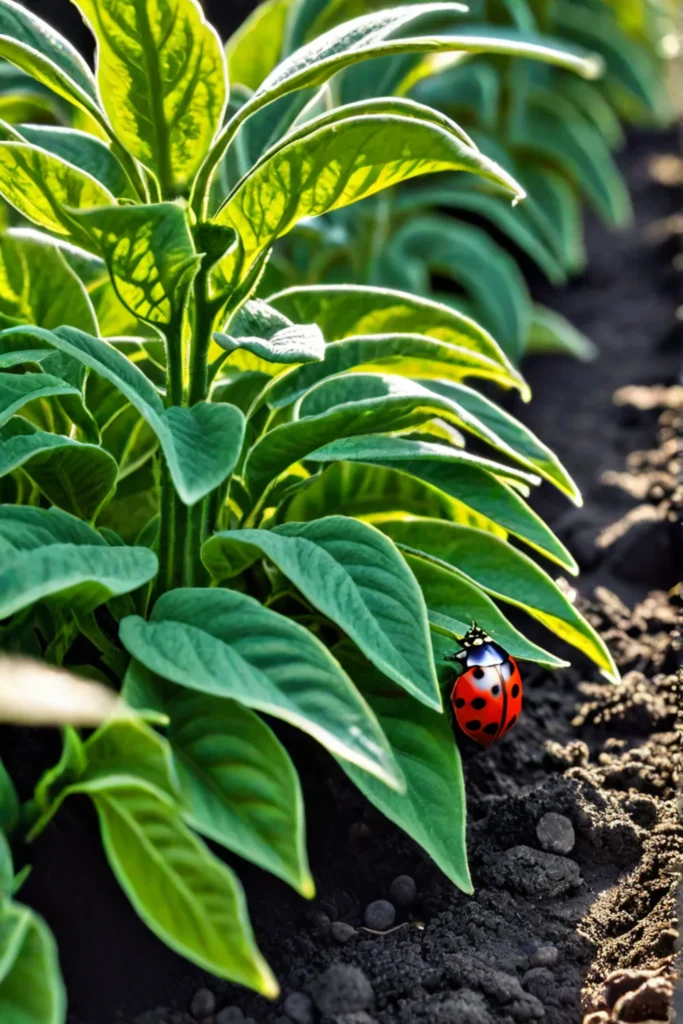
Just be mindful that some plants simply don’t make good neighbors. Steer clear of any combos that involve tall sun blockers shading out smaller crops or aggressive spreaders overtaking garden space.
With a little strategic planting, you can lean into nature’s brilliant design and grow a lush, bountiful harvest without harsh chemicals. Talk about a homegrown, eco-friendly win! Speaking of natural solutions, the next section dives into simple repellent recipes to keep bugs at bay.
Natural Repellents: Keeping Pests at Bay
You know that feeling when you walk into your garden, ready to harvest your homegrown veggies, only to find them munched on by uninvited pests? So frustrating! But before you reach for harsh chemical pesticides, let me let you in on a little secret – you can fight garden critters naturally using stuff you probably already have at home.
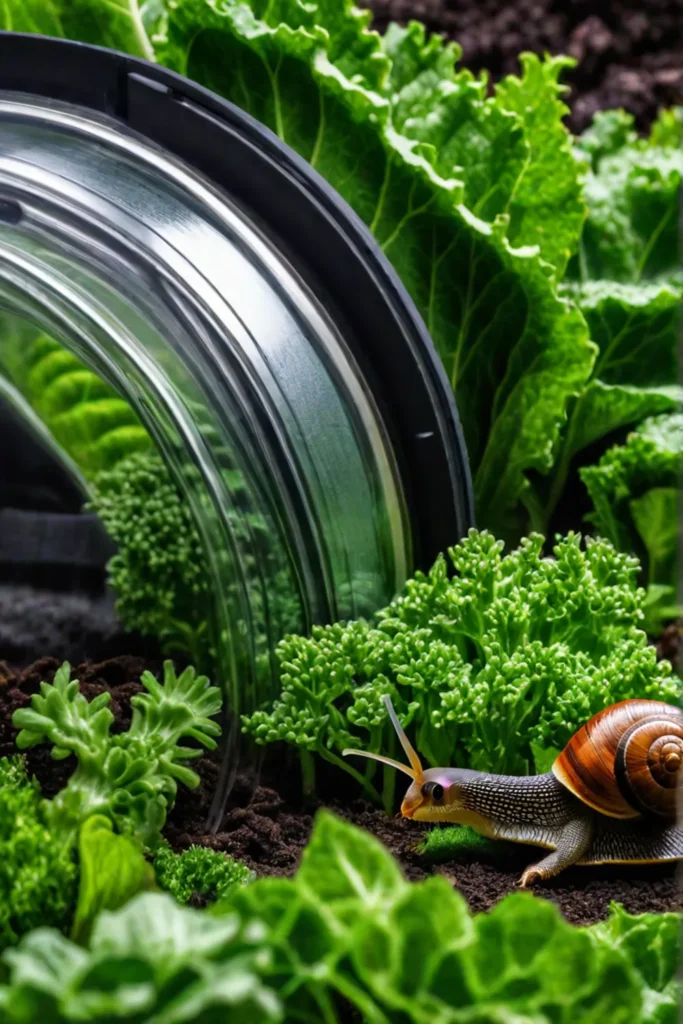
Common Household Repellents
Get this – crushed eggshells can deter slugs and snails by creating a barrier they can’t easily cross. How’s that for making use of your kitchen scraps? And if you have a bottle of neem oil lying around (you know, that super trendy oil that’s great for hair and skin), it can disrupt the hormonal balance of insects to stop them from feeding and reproducing on your plants.
DIY Repellent Sprays and Solutions
Why buy expensive repellent sprays when you can whip some up yourself? A simple garlic spray made by blending garlic cloves with water can repel aphids and whiteflies. Just spritz it on your plants and let the pungent aroma do its thing. You can also use copper tape as a barrier to deter slugs and snails from reaching your crops.
For crawling pests, sprinkle some diatomaceous earth around your plants. This powdery substance is fossilized remains of aquatic organisms (crazy, right?) and it works by damaging the exoskeletons of insects.
The best part? These natural repellents are safe for you, your plants, and the environment. So you can feel good about using them in your organic garden.

Of course, every garden is unique, so it might take some experimentation to find the right combo of natural repellents for your specific pest problems. But trust me, it’s worth taking the time to discover eco-friendly solutions that work for you. Ready to declare war on pests the natural way?
Speaking of safe and effective pest control, let’s talk about organic pesticides in the next section…
Organic Pesticides: Safe and Effective Pest Control
Did you know that some of the most effective pest control solutions can be found right in nature? While synthetic pesticides have long been the go-to choice for many gardeners, there’s a growing interest in organic alternatives that are both safe and environmentally friendly.
What Are Organic Pesticides?
Organic pesticides are derived from natural sources like plants, minerals, or microorganisms. Unlike their synthetic counterparts, they are designed to have low toxicity and break down quickly in the environment. Common examples include neem oil, insecticidal soap, and Bacillus thuringiensis (Bt), a bacteria that targets specific pests.

Targeted and Effective
Don’t let the “natural” label fool you – these organic bad boys pack a serious punch when it comes to pest control. They offer a targeted approach, allowing you to tackle specific pests without harming beneficial insects like bees and ladybugs (the good guys of the garden!). Plus, their quick breakdown means you can rest easy knowing you’re not leaving behind a toxic legacy.
Safe and Responsible Application
Now, I know what you’re thinking – “But Alex, how do I use these organic pesticides safely?” Fear not, my eco-conscious friends! Just follow the product instructions carefully, paying close attention to application rates and timing. And remember, even though they’re natural, moderation is key. Always choose the least toxic option and use pesticides responsibly.
With a little know-how and the right organic pesticides in your arsenal, you can kiss those pesky garden invaders goodbye without compromising your eco-friendly values. And who knows, you might even inspire your neighbors to join the organic revolution!
Alright, let’s move on to the next line of defense – barriers and traps for physical pest control.
Barriers and Traps: Physical Pest Control
Dealing with pesky critters munching on your veggie patch? Before reaching for harsh chemicals, why not give Mother Nature’s defense mechanisms a try? Physical barriers and traps offer a brilliantly simple way to outsmart even the wiliest of garden invaders.

Effective Barrier Methods
Sometimes the best solution is just putting up a “No Pests Allowed” sign. Row covers create an impenetrable fabric fortress around your crops, shielding them from crawling insects while still allowing sunlight and airflow. For flying menaces like birds or butterflies, anet draped over susceptible plants should send them packing.
Types of Traps and Their Uses
If barriers aren’t enough, it’s time to get a little trickier. Sticky traps are a great way to monitor (and bid farewell to) winged intruders. As for crawlers, get creative! Recycled containers sunk into the ground and filled with beer make excellent slug pubs. And for those dastardly cutworms, collars around plant bases are an elegant bouncer.
DIY Trap Ideas
Speaking of getting crafty, this is where you can let your frugal DIY spirit shine. Repurposed bottles, cans, and even old pantyhose — with a bit of ingenuity, they can all become highly effective pest traps. It’s a sustainable way to protect your harvest while cleaning up around the house. Win-win!
Physical controls keep pests at bay without resorting to harsh chemicals, making your garden an eco-friendly oasis. But they’re just one delicious ingredient in the organic pest-control recipe — so stay tuned for more natural tactics coming right up!
Conclusion
There you have it, folks – my full arsenal of natural, organic pest control methods for a flourishing veggie garden. From inviting in the “good guy” bugs to companion planting, repellent sprays, and good old-fashioned barriers, you’ve now got an entire eco-friendly toolkit at your disposal.
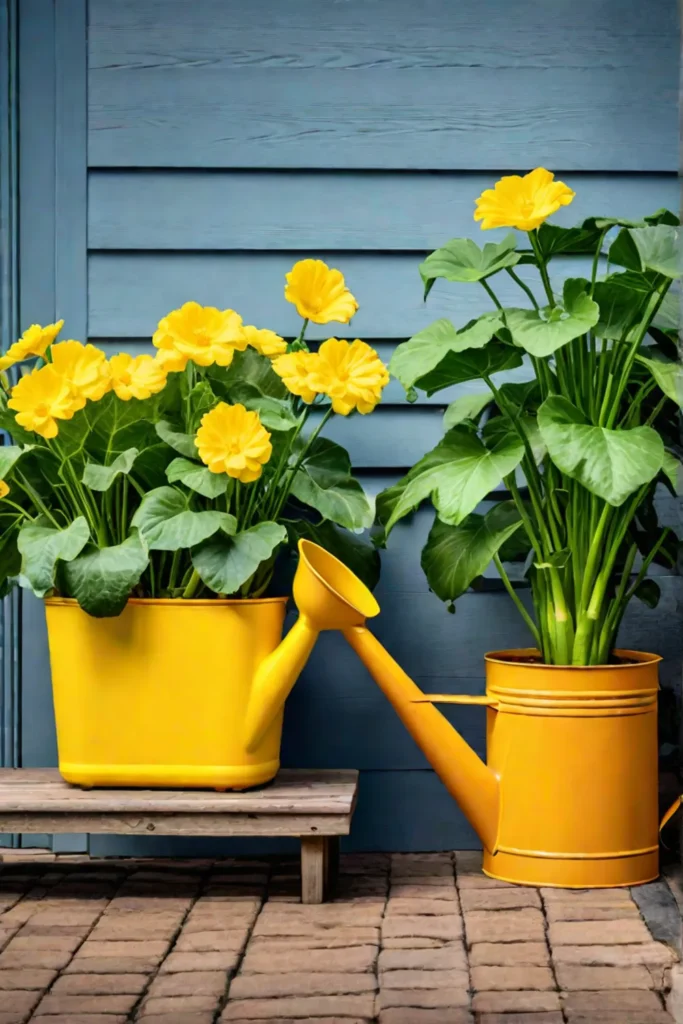
But beyond just protecting your crops, what you’re doing is nurturing a healthy, balanced ecosystem right in your backyard. One where pests are kept in check through natural means, and harsh chemicals are a thing of the past. It’s a total win for the environment, your family’s health, and all the critters that call your garden home.
So go forth and put these natural pest control strategies into action! Get creative, experiment to find what works best for you, and don’t be afraid to ask your plant-loving neighbors for tips. With a little patience and eco-friendly know-how, you’ll be harvesting bountiful baskets of homegrown goodness in no time. Now if you’ll excuse me, I’ve got some ladybugs to go release…
